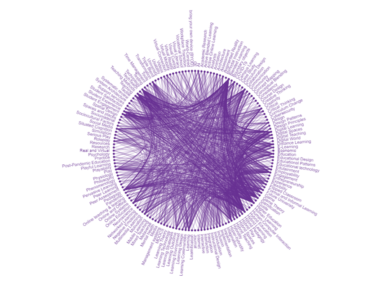by Jasmine Mazaudier, Director of Content Marketing and Communications, Panopto.
Panopto recently partnered with Streaming Media to survey global higher education leaders across three groups – academic technologists, institutional leadership, and faculty – to surface their video learning priorities and perspectives on its impact on student engagement, learning outcomes, and even enrollment. Here are the key takeaways from the report which you can download in full here.
Prioritising on-demand/asynchronous video
- Higher ed institutions are increasingly prioritizing on-demand/asynchronous video as a key part of their approach to more flexible and future-proof learning delivery. Hybrid/hyflex, flipped/blended learning, accessibility, and faculty professional development use cases have increased from the previous school year. Lecture capture remains steady (see page 15: Video learning use cases).
- Why is this? Because academic technologists and university leadership both overwhelmingly agree that on-demand video improves student engagement and learning outcomes.
Student engagement
- 81.3% of university leadership say that student engagement was important or extremely important in their institution’s adoption of asynchronous video
- 89.2% of academic technologists say that student engagement was important or extremely important in their institution’s adoption of asynchronous video
- What’s more, students now expect flexible and accessible learning experiences from their universities, and consider this an important factor when choosing an institution in which to enroll.
Student enrollment (see page 19 of the report)
- 81.3% of university leadership say that expanding the student enrollment pool was important or extremely important in their institution’s adoption of asynchronous video
- 76.2% of academic technologists say that expanding the student enrollment pool was important or extremely important in their institution’s adoption of asynchronous video
Meeting student expectations
- 87.5% of university leadership say that meeting student expectations for on-demand video was important or extremely important in their institution’s adoption of asynchronous video
- 87.7% of academic technologists say that meeting student expectations for on-demand video was important or extremely important in their institution’s adoption of asynchronous video
- Solutions that were “good enough” during the pandemic are being reassessed in favor of reliable, easy-to-use, and flexible solutions that can support them for the long haul. Cost pressures continue to rank highly on overall concerns when purchasing a VMS, but higher ed leaders are prioritizing best-in-class technology above all other factors.
- 50% of academic technologists say that identifying best-in-class technology solutions for their institution’s needs is the most important factor when managing video at their institution, far more than standardization or cost.
- “Ease of use” is the top VMS satisfaction criteria, followed by customer support and pricing. (see page 13: VMS satisfaction criteria)
- Pricing is the top VMS pain point, followed by ease of use and system reliability and uptime (see page 14: VMS paint points)
Faculty findings
Faculty have discovered both the benefits and challenges of hybrid teaching environments, but still need support from their institutions to make the best use of such tools.
- 22.3% of faculty say that being familiar with how to use their edtech tools is the primary factor to a successful classroom experience in 2023 (see page 22)
- 33% of faculty say it’s difficult or extremely difficult to use their institution’s current video tools, with 20% saying it’s just “manageable” (see page 24)
Academic technologists, faculty, and university leadership all agree that live and asynchronous video offer new opportunities for pedagogical innovation and a more expansive learning experience.
Use of video in the classroom is growing, with higher ed leaders using more video for microlearning, hands-on field work, gamified learning, mobile learning, social learning, and connecting to people in different locations (see page 17: Asynchronous/on-demand video use cases)
Read the full article by clicking here















